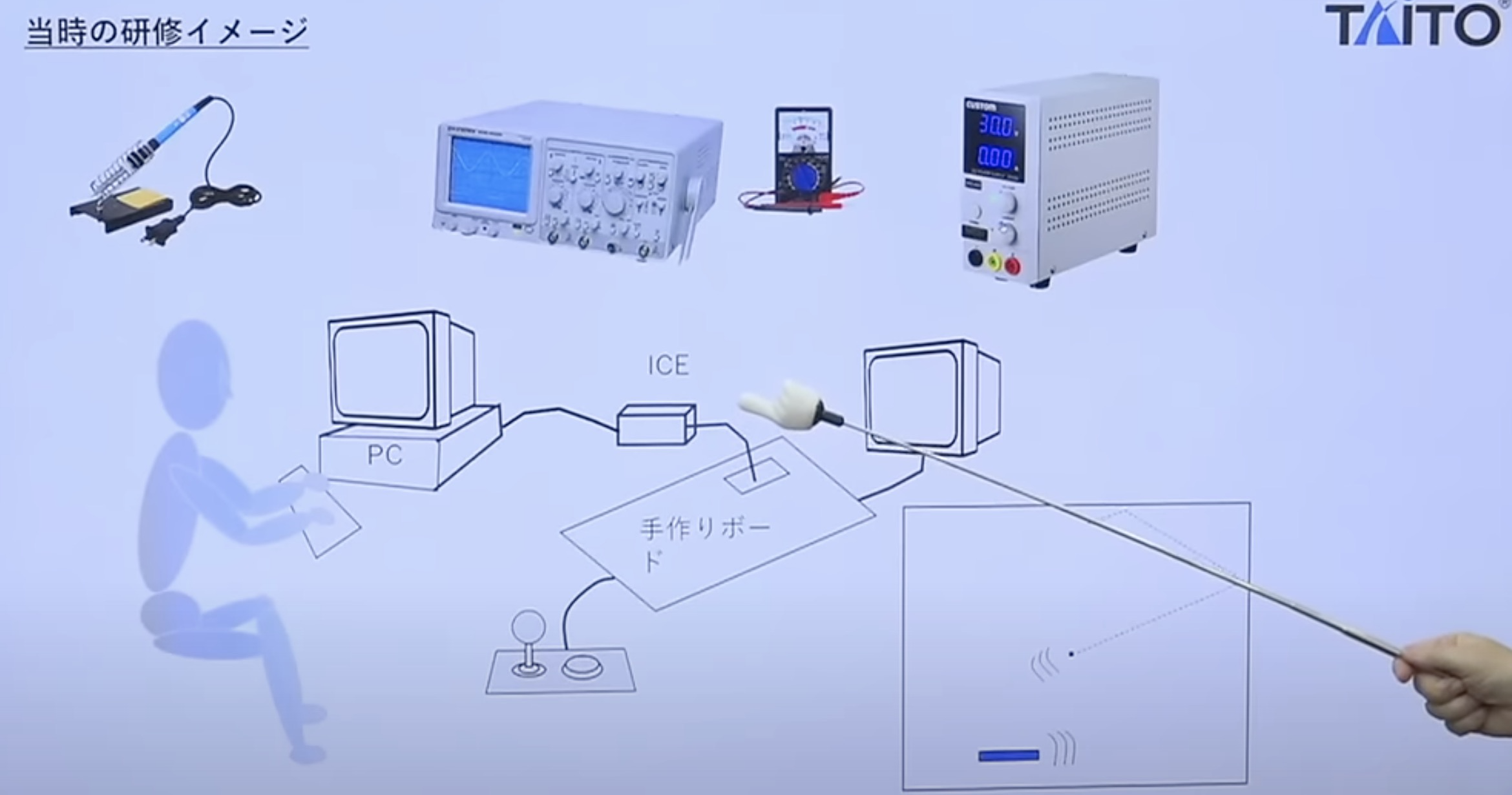
Taito put together a 250-page Hardware Manual for new developers who joined the team to learn how to create an Arcade game from scratch using RAM/ROM/CPU chips and a standard TV. This was before the internet and even before there were many books on the topic when the industry was very new and companies didn’t want to share their “trade secrets”.
With the Taito Hardware Manual for reference, new engineers were sent out to Akihabara to get some ROM and RAM chips and a CPU, solder them all together onto a test PCB, then write a brick breaker game.https://t.co/huXblA0rv4https://t.co/CXlnKUPHkH pic.twitter.com/Yip45KbLIE
— Taito Corporation (@TaitoCorp) January 19, 2024
They used an In-Circuit Emulator to debug the programs they were creating as can be seen in this diagram:

The source code for the classic arcade game from 1981 Defender has been released on Github: mwenge/defender: Defender(1981) by Eugene Jarvis and Sam Dicker
It is written in a variant of the Assembly language specifically for the Motorola 6809 CPU 1.
The physical board had 11 ROM chips on it that would need to be flashed with the assembled result of that source code 1.
Defender was developed by Eugene Jarvis and Larry DeMar two programmers who utilized algorithms to great effect rather than relying on artists, one such example is the classic explosion particle effect. Defender became one of the highest grossing arcade games in history 2.
The first issue of the Magazine Wireframe contains a python (pygame) code snippet to re-create the classic particle explosion from Defender 2. You can find that code on github too: https://github.com/Wireframe-Magazine/Wireframe-1/blob/master/explosion.py